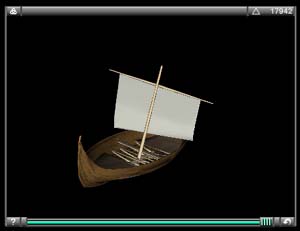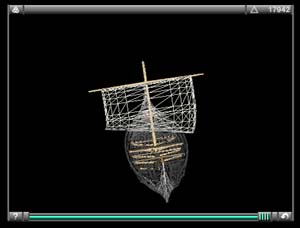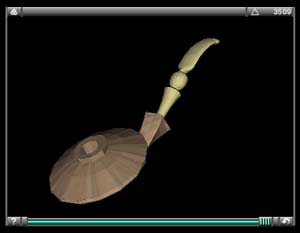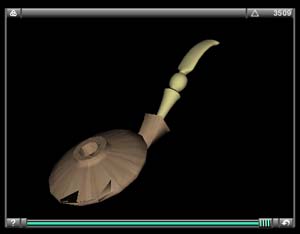Although similar to VRML, inasmuch as it is as 3D as one can get, Metastream concentrates on a single object (or group of objects), while VRML thrusts one into the middle of a 3D scenario. However, Metastream does have a significant advantage: excellent detail.
The Metastream menu is very straightforward: Clicking on the upper-left logo, one can set the manner of display, from smooth shaded, to flat shaded, to wireframe. (Note however that the plug-in is very new, and sometimes creates artifacts, as shown in the last screen shot on this page). Clicking on the lower-right arrow returns the display to its original position.
Original position? Yes, with a mouse over the artwork, the 3D object begins to rotate. A left-click and drag on the 3D object will change its relative position, and control-clicking and dragging on the object can bring it closer or further away. Until becoming accustomed to the interface and how fast an object can move, an "original position" isn't at all a bad idea.
If you have the plug-in, try my model of Amundsen's ship Gjøa, a Viking ship, or a pipe model.
If you don't have the plug-in, you have a problem, since I don't know who has it is available now [2003].

Screen shot: smooth texture.

Screen shot: wire frame.

Screen shot: flat texture.

Screen shot: smooth texture with Metastream artifact.